UK: Levant Grape Hawkmoth
Deilephila syriaca Lederer, 1855, Verh. (Abh.) zool.-bot. Ver. Wien 5: 195.Type locality: Beirut, Syria [Lebanon].
[Further details on this species, as well as photos of all stages, can be found on Lepiforum.]
Holarctic; western Palaearctic region. Pleistocene refuge: Monocentric -- Syrian refuge.
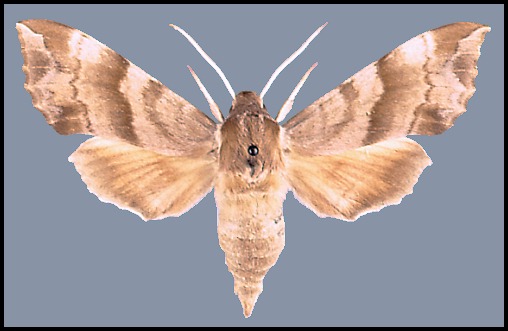
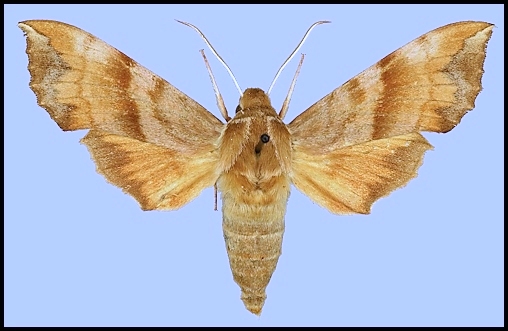
Wingspan: 50--65mm. Smaller than Clarina kotschyi (Kollar, [1849]), resembling Dendrolimus pini (Linnaeus, 1758) (European Pine Lappet): differences between these two close related species have been documented by Ebert (1976) and Danner, Eitschberger & Surholt (1998b). There is considerable variation within the species, especially in ground colour, which ranges from deep reddish brown to pale grey. The transverse lines on the wings are sometimes very faint; distal margin of forewing sometimes without indentations. There is a noticeable sexual dimorphism, with males being lighter in colour and smaller than females.
This species appears to have evolved in isolation in the Levant and spread north to Turkey since the last ice age, where it has come into contact and interbred with the closely related Clarina kotschyi, which spread westwards. It is sometimes difficult to assign individuals from the central and southern regions of Turkey and northern Iraq to either C. syriaca or C. kotschyi. These post-glacial zones of secondary contact and hybridization between once isolated sister species are known as suture zones, and have been reported for a variety of taxa in many biomes (Barrowclough et al., 2019; Ipekdal et al., 2020; Moritz et al., 2009; Portnoy & Gold, 2012).
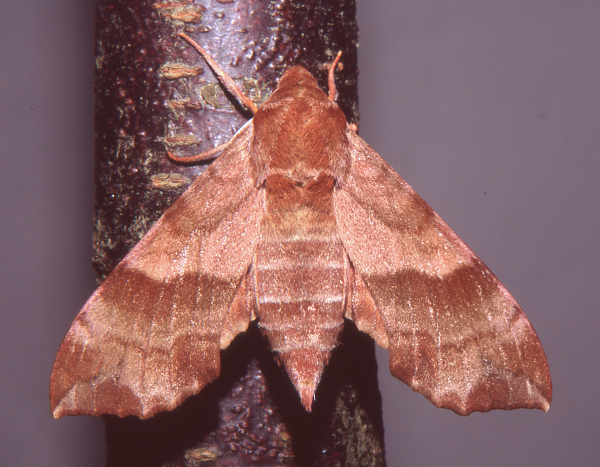
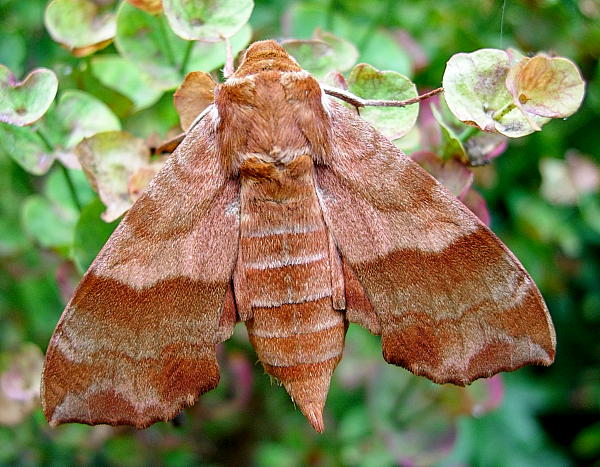
Favours the raised edges of cultivated valley floors where boulder-strewn streams bordered by vine-covered trees and shrubs occur; large numbers may be present under such conditions. It is also found on hillsides and in mountain valleys with shrubs and isolated trees, and in hillside vineyards where, in Lebanon, it occurs up to 1000m (Zerny, 1933; Ellison & Wiltshire, 1939).
In southern Turkey it is common in the valleys of the foothills of the Toros Mountains where they rise from the coastal plain; however, it is absent from the plain itself. Villas and farmhouses with pergolas covered with grapevines are especially favoured, especially where they are set into the edges of rocky slopes.
Bivoltine; from May to early July, depending on latitude, and again in August/September. It was common east and north of Alanya, Turkey, during June 2004.
OVUM: Oval, dorso-ventrally flattened, pale greenish yellow. Laid singly on the upperside of vine leaves, often intermixed with those of Theretra alecto (Linnaeus, 1758); however, they are smaller than the latter.
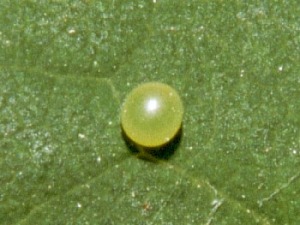
LARVA: Full-fed 55--65mm. Very similar to that of Clarina kotschyi both in colour and behaviour; retains its basic pattern and coloration throughout its development, but thoracic segments 1 and 2 are retractile in the penultimate instar. However, in newly emerged larvae the horn can be either dark grey or pinkish-orange. Found commonly in suitable areas during June and July, and again in September and October.
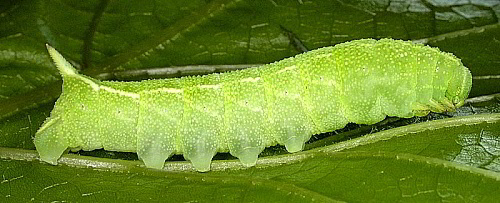
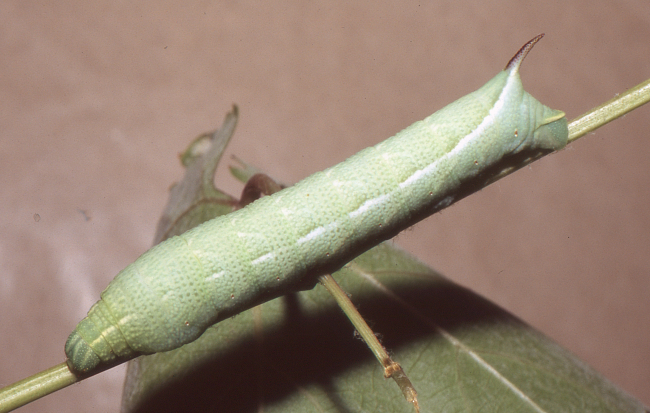
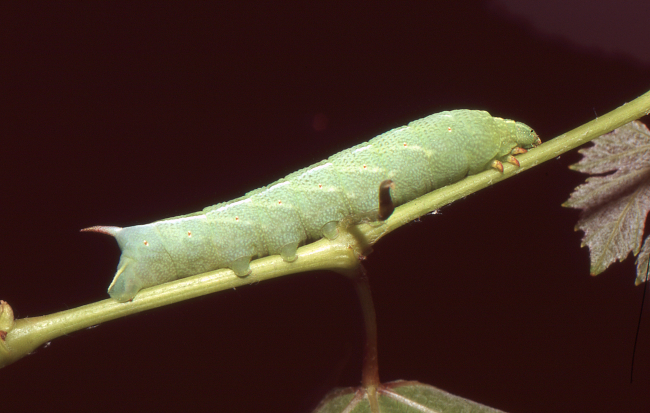
Hostplants. Species of Vitis and Parthenocissus. However, under natural conditions this species generally favours vines of Vitis vinifera hanging down walls and cliffs, and from trees.
PUPA: 30--36mm. Identical in shape and patterning to that of Clarina kotschyi, but more heavily pigmented.
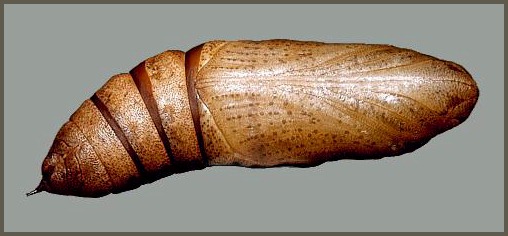
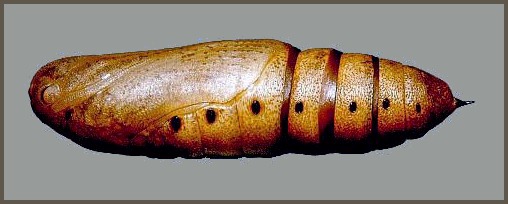
Eupelmidae: Anastatus bifasciatus (Geoffroy, 1785); Tachinidae: Compsilura concinnata (Meigen, 1824), Drino (Palexorista) imberbis (Wiedemann, 1830), Masicera sphingivora (Robineau-Desvoidy, 1830).
From central-northern Turkey (Koçak & Kemal, 2018) south to northern and western Syria (Ebert, 1976), Lebanon (Lederer, 1855), northern Jordan (Ebert, 1976; Müller et al., 2005a) and Israel (Eisenstein, 1984; Müller et al., 2005b). Also central Cyprus, with the first adult specimen captured on 19 June 1950 at Platres (Sparrow & John, 2016). Subsequently, an adult and larvae were found at and near this same location in 2020, 2021 and 2022 (Aristophanous, Pittaway & Aristophanous, 2022).
In southern Turkey this species appears to have spread farther west in recent years and can now be found up to Antalya. Farther east in southern Turkey it forms a clinal hybrid population with Clarina kotschyi, which may extend into northern Mesopotamia (Wiltshire, 1957).
Extra-limital range. None.
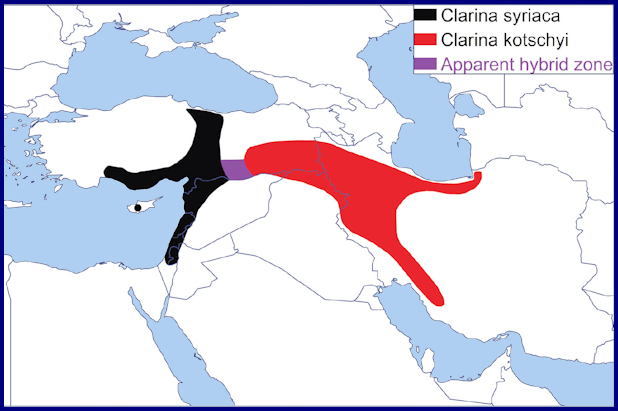
Map: Map showing the estimated distributional range of Clarina syriaca (black), Clarina kotschyi (red), and an apparent hybrid zone (purple) between the two species (© Aristophanous, Pittaway & Aristophanous, 2022).
None. The closely related Clarina kotschyi is found in southeastern Turkey (Kemal & Koçak, 2012), Mesopotamia (Wiltshire, 1957) and Iran (Brandt, 1938; Barou, 1967; Ebert, 1976; Ghassemi, Alemansoor & Alehossein, 2010).
 Return to species list
Return to species list